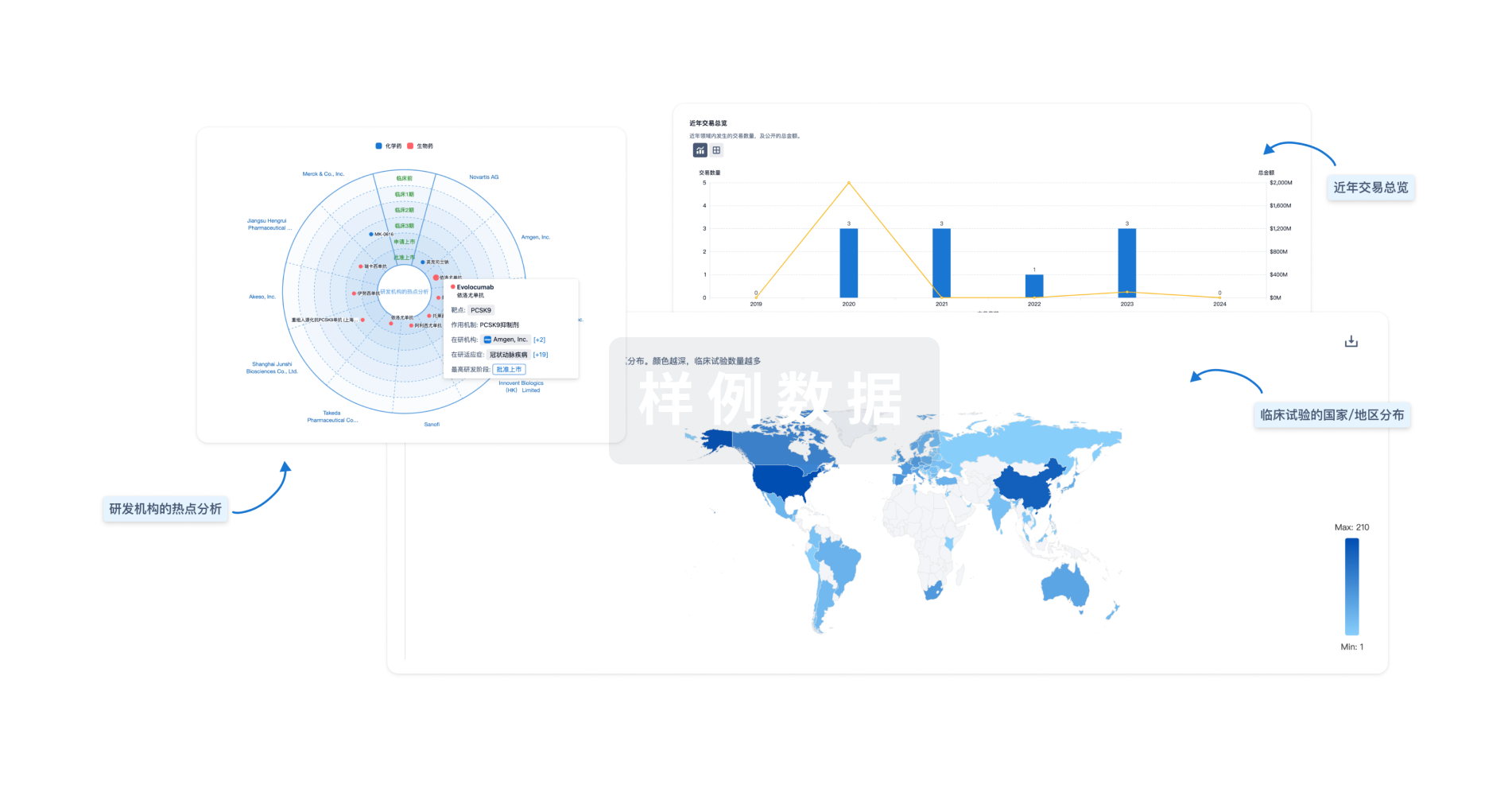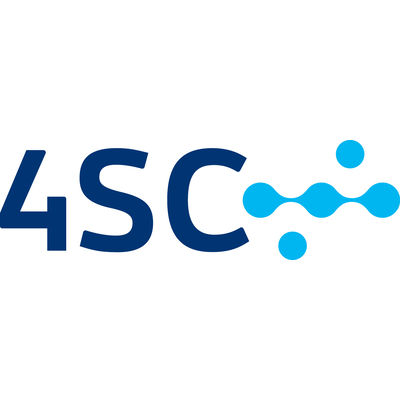预约演示
更新于:2025-05-07
NF-κB x Proteasome
更新于:2025-05-07
基本信息
相关靶点 |
关联
1
项与 NF-κB x Proteasome 相关的药物作用机制 NF-κB抑制剂 [+1] |
在研机构- |
原研机构 |
在研适应症- |
非在研适应症 |
最高研发阶段无进展 |
首次获批国家/地区- |
首次获批日期1800-01-20 |
100 项与 NF-κB x Proteasome 相关的临床结果
登录后查看更多信息
100 项与 NF-κB x Proteasome 相关的转化医学
登录后查看更多信息
0 项与 NF-κB x Proteasome 相关的专利(医药)
登录后查看更多信息
1,386
项与 NF-κB x Proteasome 相关的文献(医药)2025-12-01·Molecular Biology Reports
Mechanistic exploration of ubiquitination-mediated pathways in cerebral ischemic injury
Review
作者: Khanra, Supriya ; Singh, Shareen ; Singh, Thakur Gurjeet
2025-06-01·Toxicology Reports
Microcystin-LR and its health impacts: Chemistry, transmission routes, mechanisms of toxicity and target organs
Review
作者: Koiri, Raj Kumar ; Rajput, Siddharth ; Rajpoot, Roshni
2025-05-01·International Journal of Biological Macromolecules
BSRF1 modulates IFN-β-mediated antiviral responses by inhibiting NF-κB activity via an IKK-dependent mechanism in Epstein-Barr virus infection
Article
作者: Chen, Yonger ; Wang, Kezhen ; Liu, Yintao ; Li, Linhai ; Long, Zhiwei ; Deng, Yangxi ; Gao, Xinghong ; Cai, Mingsheng ; Xie, Xiaolei ; Chen, Shengwen ; Lv, Xi ; Chen, Xinru ; Xu, Chunyan ; Li, Meili ; Lao, Shuxian ; Peng, Tao ; Wang, Shuai ; Li, Xiaoqing ; Huang, Chen ; Huang, Wenzhuo ; Zhang, Jian
12
项与 NF-κB x Proteasome 相关的新闻(医药)2024-12-19
·今日头条
【导读】
尽管肝癌的全身治疗取得了显著进展,但由于其频繁的复发和转移,肝癌仍然是预后最差的肿瘤之一。
12月18日,中山大学李焱研究团队在期刊《Cell Death Discovery》上发表了研究论文,题为“Overexpression of PDSS2-Del2 in HCC promotes tumor metastasis by interacting with macrophages”,本研究中,研究人员阐明了PDSS2-Del2促进HCC转移的全新机制。HCC细胞中PDSS2-Del2的过表达促进了SKOR1的泛素化和降解,从而增强了SMAD3的磷酸化。继而,MST1(巨噬细胞刺激蛋白1)的表达和分泌被上调,导致巨噬细胞被招募到肿瘤组织中,并在那里分化为M2型巨噬细胞。与PDSS2-Del2过表达的HCC细胞共培养激活了巨噬细胞的PI3K/AKT信号通路,并促进了MMP2和MMP9的分泌,从而促进了HCC细胞的播散。
本研究阐明了PDSS2-Del2促进HCC转移的全新分子机制,这可能有助于开发有效的HCC临床治疗方案并预防肿瘤转移。此外,MST1可能是一个潜在的治疗靶点,MST1抑制剂或许可以应用于HCC患者中PDSS2-Del2高表达的患者。
https://www.nature.com/articles/s41420-024-02274-y#Sec9
背景信息
01
肝细胞癌(HCC)是全球重大的健康威胁之一,其发病率在全球范围内排名靠前。此外,HCC具有很高的转移和复发倾向,但其潜在的机制尚未得到充分了解,因此对于转移性病例尚无有效的治疗方案。
之前的研究中,研究人员发现PDSS2是肝癌中的肿瘤抑制基因。本研究发现,在肝癌细胞系和肿瘤组织中存在PDSS2的不同剪接变体。其中,PDSS2-Del2的功能与PDSS2全长完全不同。它通过激活NF-κB通路促进肝癌细胞的转移和血管生成。进一步的研究表明,PDSS2-Del2不仅可以通过激活肿瘤细胞本身,还可以通过与肿瘤微环境中的免疫细胞相互作用促进肝癌肿瘤细胞的转移。
PDSS2-Del2过表达通过MST1增强巨噬细胞迁移
02
之前研究已经表明,PDSS2-Del2表达水平升高的HCC细胞具有更强的侵袭和转移能力。之前,研究人员将过表达PDSS2-Del2或载体对照的HCC细胞注射到裸鼠皮下。两组细胞产生的肿瘤均进行了RNA-seq测序。研究人员进一步研究了趋化通路。将PDSS2-Del2过表达的HCC细胞与巨噬细胞共培养。结果显示,PDSS2-Del2过表达的HCC细胞显著促进了巨噬细胞的迁移,而载体对照细胞则没有。根据FISH结果,研究人员将HCC组织样本分为两组:高表达组(>16)和低表达组(≤16)。研究人员利用免疫组织化学方法评估了两组肝癌组织中巨噬细胞的浸润情况。结果显示,高表达组(n=27)的巨噬细胞浸润程度显著高于低表达组(n=27)。
PDSS2-Del2过表达可增强巨噬细胞迁移能力
接下来,研究人员收集了PDSS2-Del2过表达的PLC8024细胞和对照细胞的条件培养基(CM),并对其进行了质谱分析。在PDSS2-Del2过表达的PLC8024细胞中检测到了MST1,但在对照组中未检测到。研究人员对PDSS2-Del2过表达的HCC细胞和对照细胞进行了蛋白质免疫印迹实验和qRT-PCR检测。与对照组相比,PDSS2-Del2过表达的HCC细胞中MST1的蛋白和mRNA水平显著升高。研究人员收集了条件培养基,对其进行了浓缩并进行了检测。在共培养实验中,研究人员用MST1抑制剂处理细胞,结果表明,MST1抑制剂显著抑制了PDSS2-Del2组巨噬细胞的迁移,但对对照组无影响。这些结果表明,PDSS2-Del2过表达可通过MST1促进巨噬细胞迁移,而MST1抑制剂可减弱这一效应。
SKOR1蛋白的降解导致MST1表达增加
03
接下来,研究人员探究了PDSS2-Del2在HCC细胞中增加MST1表达的分子机制。研究人员使用PDSS2抗体在8024和Huh7细胞中进行Co-IP实验,并使用质谱分析了样品。研究人员检测了SKOR1的表达水平,发现在PDSS2-Del2过表达的HCC细胞中SKOR1表达显著降低。然而,在实验组和对照组之间的RNA水平无显著差异。在PDSS2-Del2过表达的HCC细胞中,SKOR1蛋白的降解速率相对于对照组明显增加,这表明PDSS2-Del2过表达可能促进SKOR1的降解。在PDSS2-Del2过表达的HCC细胞中,在蛋白酶体抑制剂MG132的治疗下,SKOR1蛋白水平部分恢复。研究人员然后使用蛋白酶体抑制剂MG-132来抑制蛋白质降解过程。在MG-132治疗24小时后,蛋白质免疫印迹实验结果显示,与对照细胞相比,PDSS2-Del2过表达的HCC细胞中SKOR1的泛素化显著增加。
研究人员检测了SMAD3并发现,与对照细胞相比,PDSS2-Del2过表达的HCC细胞中SMAD3的蛋白和磷酸化水平显著增加。当SKOR1过表达时,这种效应减弱。这些结果表明,SKOR1可以抑制SMAD3的磷酸化。在HCC细胞中,PDSS2-Del2过表达会降低SKOR1的表达,从而增加磷酸化SMAD3的水平并影响下游基因表达。然后,研究人员敲低了PDSS2-Del2过表达HCC细胞中的SMAD3,结果显示,SMAD3敲低细胞中MST1的表达水平也降低,这表明SMAD3调节MST1的表达。综上所述,这些结果表明,HCC细胞中PDSS2-Del2的过表达导致SKOR1的降解,SMAD3的磷酸化水平增加,最终导致MST1表达上调。
综合这些结果表明,在HCC细胞中过表达PDSS2-Del2可以加速SKOR1的降解,从而促进MST1的分泌,进而招募巨噬细胞进入肿瘤微环境。与PDSS2-Del2过表达的HCC细胞共培养会刺激巨噬细胞中的PI3K/AKT信号通路,促进巨噬细胞向M2型分化,并诱导MMP2/MMP9的分泌,从而为肿瘤转移提供适宜的微环境。
研究意义
04
本研究阐明了PDSS2-Del2如何促进HCC转移的分子机制,这可能有助于开发有效的HCC临床治疗方法,并防止肿瘤转移。此外,MST1可以作为潜在的治疗靶点。
【参考资料】
https://www.nature.com/articles/s41420-024-02274-y#Sec9
【关于投稿】
转化医学网(360zhyx.com)是转化医学核心门户,旨在推动基础研究、临床诊疗和产业的发展,核心内容涵盖组学、检验、免疫、肿瘤、心血管、糖尿病等。如您有最新的研究内容发表,欢迎联系我们进行免费报道(公众号菜单栏-在线客服联系),我们的理念:内容创造价值,转化铸就未来!
转化医学网(360zhyx.com)发布的文章旨在介绍前沿医学研究进展,不能作为治疗方案使用;如需获得健康指导,请至正规医院就诊。
热门推荐活动 点击免费报名
🕓 线上|2024年12月6日-2025年1月16日
▶ 《我的2024》
🕓 全国|2024年12月-2025年03月
▶ 中国转化医学产业大会
🕓 上海|2025年02月28日-03月01日
▶ 第四届长三角单细胞组学技术应用论坛暨空间组学前沿论坛
点击对应文字 查看详情
临床研究
2024-12-11
点击蓝字关注
《中国肿瘤临床》公众号
指南
恶性肿瘤免疫治疗技术应用指南(精简版)
中国抗癌协会肿瘤生物治疗专业委员会
摘要
恶性肿瘤是严重威胁人类健康和生命的主要疾病之一,其发病率和死亡率逐年增高,已成为我国居民死亡的首位原因。长期以来,手术、放疗和化疗成为肿瘤治疗的三大常规治疗手段,但仍然对诸多肿瘤疗效不佳。随着肿瘤治疗理念的变化,免疫治疗已经成为肿瘤综合治疗的第四种模式,并受到了越来越多的关注。中国抗癌协会(CACA)在现有循证医学证据基础上,结合国内外指南和共识,制订了恶性肿瘤免疫治疗技术应用指南,希望对从事临床免疫治疗的医师有所助益。
前言
恶性肿瘤是威胁人类健康和生命的主要疾病之一,其发病率逐年增高。世界卫生组织(WHO)专家预测,2020年全球人口80亿,癌症新发病例将达到2 000万,其中死亡病例1200万,癌症将成为影响人类健康的重要疾病,并成为全球最大的公共卫生问题[1]。长期以来,手术、放疗和化疗是肿瘤治疗的常规手段,但目前许多肿瘤无法采用上述方法实现治愈。随着目前生物科技的迅速发展和对肿瘤发生及进展机制的深入研究,免疫治疗已经成为肿瘤综合治疗的新模式。虽然现在该治疗模式尚不能替代传统手段,但在提高手术、放化疗疗效以及延长患者生存期、改善生存质量方面已经受到了越来越多的认可。因此,中国抗癌协会(CACA)组织了相关领域专家,在现有循证医学证据基础上,结合国内外指南和共识,制订了恶性肿瘤免疫治疗技术应用指南,希望对从事临床免疫治疗的医师有所助益。
01
CAR-T治疗技术
1.1 CAR-T细胞在血液瘤中的应用
1.1.1 适用指征
一般要求:1)卡氏(karnofsky,KPS)评分≥50分或ECOG体力状态评分(eastern cooperative oncology group performance status,ECOG PS)≤2分。2)具有良好的心、肺、肝脏功能,左心室射血分数(LVEF)≥50%;谷丙转氨酶 ( glutamic pyruvic transaminase ,GPT 又称 ALT)、谷草转氨酶 (glutamic oxaloacetic transaminase, GOT 又称AST)<正常3倍、胆红素<2.0 mg/dL;室内空气患者血氧饱和度≥92%。3)无活动性感染。4)预计生存期>12周。5)免疫组织化学或流式细胞术检测瘤细胞相应靶点阳性。纳基奥仑赛[CD19 嵌合抗原受体T细胞(chimeric antigen receptor T cell,CAR-T)]可用于复发难治成人急性淋巴细胞白血病;伊基奥仑赛(BCMA CAR-T)可用于治疗复发性或难治性多发性骨髓瘤成人患者,过去至少经过三线治疗(至少使用了一种蛋白酶抑制剂和免疫调节剂);泽沃基奥仑赛(BCMA CAR-T)可用于治疗既往接受过至少 3 种治疗后疾病进展(包括蛋白酶体抑制剂和免疫调节剂)的复发/难治性多发性骨髓瘤成人患者[2]。
1.1.2 操作流程
1)淋巴细胞采集:一般要求患者血小板>50×109/L,供者血红蛋白>60 g/L,采集单个核细胞总数>109个,淋巴细胞采集量一般为60~600×106 /kg以确保充足T细胞原料[3]。患者前期接受的治疗药物可能影响CAR-T细胞活性,不同治疗或药物在采集T细胞前需有一定洗脱期。
2)预处理:常用的预处理方案为环磷酰胺联合氟达拉滨。推荐采用氟达拉滨(25~30 mg/m2/d,连用3天)联合环磷酰胺(250~500 mg/m2/d,连用3~5天)预处理方案[4]。
3)CAR-T细胞输注:一般预处理后48 h输注CAR-T细胞,最长不宜超过7天,常规输注剂量为1×106 /kg个CAR表达阳性T细胞,推荐输注总剂量>2.5×107个CAR表达阳性T细胞[5]。在细胞输注前,可选择使用对乙酰氨基酚和苯海拉明或其他H1-抗组胺药进行预处理,以避免发生超敏反应(建议提前0.5~1.0 h使用抗过敏药)。
1.1.3 疗效评估
推荐CAR-T细胞输注后第28天或血象恢复后,完成骨髓细胞学检测进行疗效评估。伴髓外病变者,建议在CAR-T治疗28天同时评估髓外病变,MRI、CT或X线片均可作为评估手段,3个月后可考虑PET-CT评估。推荐在半年内每个月进行疗效评估。
1.1.4 复发或进展后挽救性治疗
对于急性淋巴细胞白血病(acute lymphoblastic leukemia,ALL)、急性髓细胞性白血病(acute myeloid leukemia,AML),目前证据等级最高的预防复发的手段为直接桥接异基因造血干细胞移植(allogeneic hematopoietic stem cell transplantation,allo-HSCT),通过不同靶点CAR-T细胞序贯输注或者双靶点CAR-T也可进一步减少复发率。CAR-T治疗后复发的治疗,二次CAR-T细胞治疗也值得临床尝试,也可选择参加其他临床试验。
1.2 CAR-T细胞在淋巴瘤中的应用
1.2.1 弥漫性大B细胞淋巴瘤
目前,国内CAR-T治疗的适应证为经过二线及以上系统治疗的成人弥漫性大B细胞淋巴瘤(large B-cell lymphoma,LBCL)患者。对标准一线免疫化疗治疗原发耐药或一线免疫化疗后12个月内复发的LBCL成人患者可尝试使用CAR-T治疗。axi-cel(阿基仑赛)可安全、高效地用于成人高危LBCL、经过一线标准方案2个疗程免疫化疗后PET评估阳性的患者[6]。
1.2.2 滤泡性淋巴瘤和边缘区淋巴瘤
CAR-T治疗复发/难治性(relapsed or refractory,R/R)滤泡性淋巴瘤(follicular lymphoma,FL)和边缘区淋巴瘤(marginal zone lymphomas,MZL)患者中显示卓越疗效的同时也有非常好的安全性,可明显改善这类患者的预后和生存。目前,瑞基奥仑赛注射液已正式获批治疗R/R FL。
1.2.3 套细胞淋巴瘤
自体造血细胞移植(allogeneic hematopoietic stem cell transplantation,auto-HSCT)是符合移植条件患者首选标准治疗;而至少对一种布鲁顿酪氨酸激酶(bruton’s tyrosine kinase,BTK)抑制剂治疗失败或不耐受的R/R套细胞淋巴瘤(mantle cell lymphoma,MCL)患者,优先选择CAR-T细胞治疗;CAR-T细胞治疗失败或不可行,则建议进行allo-HSCT。
1.2.4 慢性淋巴细胞白血病
对allo-HCT后复发慢性淋巴细胞白血病(chronic lymphocytic leukemia,CLL)患者可考虑使用供者来源的CAR-T细胞,既可克服患者自身来源的CAR-T细胞功能缺陷,还可类似供者淋巴细胞输注的控瘤效果,而且在小样本的临床观察中未发现严重移植物抗宿主病(graft versus host disease,GVHD)的发生[7]。脐带血来源的异体CAR-NK细胞近年来在临床研究中也展示对CLL不错的疗效,且安全性良好。为克服CAR-T治疗后发生肿瘤抗原逃逸问题,可尝试使用CD19/CD20双靶点CAR-T细胞治疗。但是,这些治疗策略目前在CLL中的临床试验数据结果有限,有效性还有待更大样本证实。
1.2.5 霍奇金淋巴瘤
免疫检查点抑制剂、维布妥昔单抗、造血干细胞移植和常规化疗药物仍是临床治疗R/R霍奇金淋巴瘤(Hodgkin's lymphoma,HL)常见选择。目前,靶向CD30 CAR-T临床研究结果虽不令人满意,但随着研究深入及联合治疗探索,相信将来CAR-T在R/R HL仍有用武之地。
1.2.6 T细胞淋巴瘤
复发难治性T细胞淋巴瘤(T-cell lymphoma,TCL)的治疗仍以化疗、靶向治疗及造血干细胞移植为主。CAR-T细胞临床试验仍处于初步阶段。随着对免疫机制的深入了解和基因编辑技术的发展成熟,将寻找更加特异性的靶点,改进CAR-T细胞制备平台,设计出更高效、更安全的CAR-T细胞,相信CAR-T细胞免疫治疗未来会有更多的突破和发展。
1.3 CAR-T细胞在实体瘤中的应用
1.3.1 Claudin18.2 CAR-T
Claudin(CLDN)蛋白,是一类跨膜紧密细胞连接蛋白。CLDN18.1在正常肺上皮中呈选择性表达,CLDN18.2仅在胃上皮细胞中表达。研究表明,CLDN18.2在胃癌、胰腺癌等肿瘤中呈高表达。基于其在肿瘤中的表达特点,CLDN18.2可能是治疗胃癌、胰腺癌等实体瘤的潜在靶点[8]。
目前,约有20余项靶向CLDN18.2的细胞治疗产品处于临床前或早期临床研究阶段,人源化靶向CLDN18.2的二代自体CAR-T细胞(CT041)已进入关键Ⅱ期临床研究阶段。目前在临床阶段探索的适应证主要以晚期消化系统肿瘤为主,如胃癌及胰腺癌。有临床数据披露的靶向CLDN18.2 CAR-T产品主要是CT041,是全球首个进入确证性Ⅱ期临床试验的靶向CLDN18.2细胞治疗产品[9]。
1.3.2 间皮素CAR-T
间皮素(mesothelin,MSLN)基因编码一种前蛋白,经蛋白水解后产生间皮素,间皮素是一种含糖磷脂酰肌醇(GPI)的细胞表面糖蛋白,通过GPI锚定在细胞膜表面。MSLN通过其GPI直接激活或与其受体CA125/MUC16相互作用,激活核因子κB(NF-κB)、磷脂酰肌醇3-激酶(PI3K)和丝裂原活化蛋白激酶(MAPK)信号途径,通过促进肿瘤细胞增殖、局部浸润和转移以及抗凋亡,实现肿瘤恶性转化和侵袭性。
以MSLN为靶点的实体瘤的CAR-T细胞治疗,目前约有20项进入临床研究阶段,主要集中在Ⅰ/Ⅱ期,尚无进展到Ⅲ期的研究以及上市的药物[10]。临床研究适应证以间皮瘤、胰腺癌、卵巢癌居多,其他还有胆管癌、肺癌和乳腺癌等。临床研究中药物使用模式为单药探索或联合免疫检查点信号调节,给药方式为静注或局部注射(胸膜腔注射,腹腔注射等),部分进行清淋预处理,也有部分研究探索非清淋预处理。总体而言,以MSLN为靶点的实体瘤CAR-T细胞治疗,经临床验证安全性良好,临床观察到一些初步疗效,但有待进一步研究。
1.3.3 鸟苷酸环化酶C CAR-T
鸟苷酸环化酶C(guanylyl cyclase C,GCC/GUCY2C)属于受体鸟苷酸环化酶家族中一员,在胃肠道液体和离子稳态中起关键作用。近来研究发现,GUCY2C在原发性结直肠癌细胞呈稳定表达,而在转移性结直肠癌细胞中异常高表达,被认为是转移性结直肠癌特异性标志分子之一[11]。
以GUCY2C为靶点的实体瘤CAR-T细胞治疗,目前约有10项进入临床研究阶段,主要集中在Ⅰ/Ⅱ期,尚无进展到Ⅲ期的研究及上市药物。临床研究适应证以结直肠癌为主。
1.3.4 上皮细胞黏附分子CAR-T
上皮细胞黏附分子(epithelial cell adhesion molecular,EpCAM)是一种糖基化Ⅰ型跨膜糖蛋白,参与调节癌细胞黏附、增殖、迁移、干性和上皮-间质转化(EMT)。在肿瘤组织中,EpCAM表达从基底层改变为在细胞膜表面均匀表达,使其能在细胞或抗体疗法中作为靶点。
目前,有多个靶向EpCAM的细胞治疗产品在临床前或早期临床研究阶段,但尚无产品进入关键临床阶段或申请上市。目前在临床阶段主要探索的适应证以晚期消化系统肿瘤为主,如胃癌及结直肠癌[12]。
1.3.5 磷脂酰肌醇蛋白聚糖3 CAR-T
磷脂酰肌醇蛋白聚糖3(glypican 3, GPC3)在调控细胞生长和分化方面起重要作用,与肝癌发生、发展密切相关。
目前,已有多个靶向GPC3细胞治疗产品在临床前或早期临床研究阶段,但尚无产品进行关键临床阶段或申请上市。在临床阶段探索的适应证主要以肝细胞癌为主,其他包括脂肪肉瘤、肺癌、梅克尔(Merkel)细胞癌、横纹肌肉瘤、肾母细胞癌、胆管癌、卵黄囊瘤等。
1.3.6 受体酪氨酸激酶样孤儿素受体1 CAR-T
受体酪氨酸激酶样孤儿素受体1(receptor tyrosine kinase-like orphan receptor 1,ROR1)是ROR受体家族一员,ROR1可通过介导非经典Wnt信号通路(non-canonical Wnt pathways)的信号传递,在多种生理过程发挥重要作用。作为Wnt5a的受体,ROR1参与激活瘤细胞NF-κB通路。ROR1在人正常组织中低表达或不表达,但在多种恶性肿瘤或组织中高表达。
目前,有多个靶向ROR1细胞治疗产品在临床前或早期临床研究阶段,但尚无产品进入关键临床阶段或申请上市。适应证主要包括ROR1阳性血液肿瘤和实体瘤,包含非小细胞肺癌(non-small cell lung cancer,NSCLC)、三阴性乳腺癌、CLL、MCL和ALL[13]。
02
T细胞受体修饰的T细胞治疗技术在实体瘤中的应用
T细胞受体修饰的T(TCR-modified T-cell therapy,TCR-T)细胞基因修饰的T细胞治疗在实体瘤中显示独特优势,具肿瘤趋化性和靶向性,现全球有200多项主要针对实体瘤的TCR-T细胞临床试验,最常见的有恶性黑色素瘤、肉瘤、消化道恶性肿瘤、肺癌等。
2.1 患者和靶点的选择
2.1.1 患者治疗前评估
临床研究中常选择18岁以上成年人,最大年龄一般不超过80岁。一般选择明确诊断为恶性肿瘤且经二线方案治疗失败或不可耐受的患者。常选择ECOG评分为0~1分患者。
2.1.2 靶点的选择
目前,TCR-T细胞治疗靶点主要针对肿瘤-睾丸抗原家族如NY-ESO-1、MAGE-A3、MAGE-A4,还有肿瘤过表达抗原如CEA和肿瘤特异性抗原如HPV和HBV抗原等[13]。针对靶抗原既往已鉴定出HLA限制性特异性TCR序列,可通过外周血流式细胞术或PCR技术明确患者HLA分型,选择HLA和靶点同时匹配的患者制备个体化TCR-T细胞[14]。
2.2 TCR-T细胞临床治疗流程
2.2.1 淋巴细胞分离
通常情况下,单采淋巴细胞总数约为2~5×109个,单采参数根据试验不同要求、患者白细胞和淋巴细胞绝对值计数适当调整:每个循环血量600 mL,每个循环采集细胞悬液6~8 mL,10~15个循环,总循环血量约6 000~9 000 mL,共收集细胞悬液一般约80~100 mL。需要注意药物洗脱期[15]。
2.2.2 化疗预处理
常用预处理方案为氟达拉滨注射液(25~40 mg/m2/d,连用3~4天)和环磷酰胺注射液(300~500 mg/m2/d,连用2~3天)。
2.2.3 TCR-T细胞输注
TCR-T细胞回输前需再次评估患者临床状态,体温、心率、血压、氧合情况、有无活动性感染和严重器官功能不全等。常会在TCR-T细胞输注前给予解热镇痛药和抗组胺类药物,以降低回输过程的输液反应。回输过程中严密监测患者生命体征,同时备托珠单抗注射液必要时处理相关副作用使用。IL-2作为体内刺激T细胞增殖关键细胞因子,在TCR-T细胞输注后24 h内可予应用,国外推荐剂量为50~72万IU/kg,8 h/次,连续15次但以患者具体耐受情况可调整用药剂量和频度。
2.3 实验室指标评价
除影像学评估外,关于TCR-T细胞治疗后,实验室指标监测对不良事件预测和疗效评价具重要意义。在滑膜肉瘤患者接受TCR-T细胞治疗中,TCR-T细胞数量和有效记忆亚群细胞比例在有反应患者中明显升高,细胞因子如IL-15、IFN-γ和IL-6在回输后第3天和第4天升高,与疗效呈正相关[16]。在胰腺癌,除细胞数量外,IFN-γ、CCL4、GM-CSF和TNF在治疗有效患者外周血中明显升高。在HPV相关肿瘤,患者接受TCR-T细胞治疗后,细胞因子IFN-γ、TNF-α、IL-2和VEGFA在有反应患者中明显升高[17]。
03
肿瘤浸润淋巴细胞在实体瘤中的应用
3.1 TIL治疗恶性黑色素瘤
3.1.1 TIL治疗恶性黑色素瘤预处理方案
肿瘤浸润淋巴(tumor infiltrating lymphocyte,TIL)输注前行淋巴细胞清除是TIL治疗重要环节。常用预处理方案有环磷酰胺+氟达拉滨,氟达拉滨+放疗或环磷酰胺+氟达拉滨+放疗[18]。
3.1.2 IL-2在TIL中的作用
对采用一线、二线治疗方法失败的转移性黑色素瘤患者,IL-2与TIL联合治疗,可改善TIL生长和活性,从而提高临床反应率[19]。
3.2 TIL治疗其他实体瘤
目前,TIL治疗的肿瘤类型主要是恶性黑色素瘤,其次是NSCLC、卵巢癌和头颈癌。TIL在转移性黑色素瘤和晚期宫颈癌中显示出较好临床疗效,NSCLC、结直肠癌和乳腺癌中也显示初步疗效[20]。由于肿瘤抗原突变的异质性,TIL细胞对实体瘤产生应答有所不同。与恶性黑色素瘤的TIL相比,其他肿瘤TIL的反应性较弱且功能较低。
3.3 TIL与其他疗法的联合应用
3.3.1 TIL与免疫检查点抑制剂联合
免疫检查点受体(如CTLA-4和PD-1/PD-L1)表达于T细胞表面,是免疫系统自我保护机制。肿瘤患者中,效应T细胞上CTLA-4和PD-1分子被上调,并分别与抗原呈递细胞或瘤细胞的B7-1/B7-2和PD-L1结合,从而导致T细胞功能受抑[21]。此外,T细胞长期接触肿瘤抗原后,CD8+T细胞会出现凋亡或进入异常分化状态,抑制性受体会高表达,使CD8+T细胞对特异性肿瘤抗原几乎无反应,此时可用检查点抑制剂改善CD8+T细胞活性[22]。因此,为增加TIL肿瘤反应性,可在TIL初始培养阶段及在TIL输注后联合免疫检查点抑制剂(immune checkpoint inhibitor,ICI)治疗。
3.3.2 TIL与BRAF抑制剂联合
大部分肿瘤患者会发生BRAF突变,激活的BRAF突变(主要是V600E)可诱导免疫逃逸,使机体免疫“迟钝”,并获得逃避T细胞免疫反应的能力。BRAF抑制剂威罗非尼可降低相关免疫抑制信号,减少免疫抑制细胞,增强黑色素瘤抗原表达,促进淋巴细胞浸润和特异性T细胞增殖。但BRAF抑制剂的临床作用持续时间短。最近一项临床试验显示,接受TIL、HD IL-2和威罗非尼联合治疗11例转移性黑色素瘤患者中有7例出现有效应答,其中2例患者达完全缓解[23]。
3.3.3 TIL与其他疗法的联合
树突状细胞(dendritic cell,DC)是人体抗原递呈能力最强的细胞,DC治疗通过采用病人自体单核细胞在体外培养诱导生成DC,然后负载相应肿瘤抗原,制成负载肿瘤抗原的DC,再将这些DC注入体内,刺激体内的肿瘤杀伤性淋巴细胞增殖,发挥长期肿瘤监视作用和肿瘤杀伤作用,达到控灭肿瘤的目的。DC疫苗可和TIL治疗联合,激活和增加TIL数量,目前DC与TIL联合治疗的临床试验正在进行[24]。溶瘤病毒通过使TIL分泌细胞因子,从而提高TIL的控瘤作用,TIL疗法与溶瘤病毒联合治疗也正在探索[25]。
04
细胞因子诱导的杀伤细胞在肿瘤中的应用
细胞因子诱导的杀伤细胞(cytokine-induced killer cells,CIK)疗法由于细胞来源易于获取和强大的控瘤活性,已在肿瘤免疫治疗中广泛应用。CIK疗法常与其他治疗手段联用,如联合放化疗、射频消融、免疫检查点抑制剂治疗等。放化疗、射频消融可诱导稳定的肿瘤特异性T细胞反应,可进一步增强肿瘤特异性免疫反应,免疫检查点抑制剂治疗可有效打破抑制性的肿瘤微环境,联合应用CIK细胞可有效抑制肿瘤细胞生长,甚至杀灭肿瘤,且CIK细胞的抗肿瘤效应对机体无显著毒副反应,在无法确定肿瘤特异性抗原或对抗原了解相对较少情况下,应用CIK细胞作为肿瘤放化疗和术后辅助治疗有重要意义。
4.1 多发性骨髓瘤
硼替佐米+地塞米松+沙利度胺(BDT)方案是治疗多发性骨髓瘤(multiple myeloma,MM)患者最常用化疗方案之一。DC具有很高的抗原识别和递呈能力,CIK细胞联合DC已被证明在临床前和临床实践中具有良好的控瘤效果。一项Meta分析结果显示,与单独BDT方案相比,DC-CIK过继免疫细胞联合BDT方案患者疾病缓解率显著提高,血清中CD4+、CD4+/CD8+水平也显著上升,MM患者采取DC-CIK过继免疫细胞联合BDT治疗可改善免疫功能及生存质量。
4.2 白血病
由于免疫系统在监控及杀伤肿瘤细胞方面发挥重要作用,当化疗和骨髓移植对白血病患者无效时,免疫细胞治疗(如CIK细胞)作为一种替代疗法取得了一定疗效。目前,以CIK疗法作为化疗或造血干细胞移植(hemapoietic stem cell transplantation,HSCT)的补充已用于临床研究。研究表明,CIK与DC细胞联用治疗白血病,不良反应少,并发症程度轻,是治疗异基因造血干细胞移植后复发急性髓系白血病(AML)的安全、有效方法[26]。
4.3 淋巴瘤
CIK治疗淋巴瘤的临床研究较少,研究报道,一例复发难治性滤泡性淋巴瘤患者经多次化疗后未能获得有效缓解,行异体CIK细胞输注治疗后,患者获得了较长时间完全缓解,并伴随症状改善,生存期延长[27]。关于DC-CIK细胞治疗弥漫性大B细胞淋巴瘤临床研究也提示,该疗法能增加患者外周血淋巴细胞绝对计数,提高机体细胞免疫功能,改善生存质量[28]。
4.4 食管癌
与单用化疗相比,CIK/DC-CIK细胞联合化疗可增强食管癌(esophagus cancer,EC)患者的免疫功能进而提高疗效。在老年EC中DC-CIK细胞联合调强放疗(intensity-modulated radiation therapy,IMRT)的短期疗效优于单独IMRT,生存质量和生存期得到明显改善。最新研究表明在早期食管鳞癌中,CIK细胞组总生存期和无进展生存期均明显高于对照组[29]。
4.5 肝癌
肝癌术后应用CIK细胞治疗,患者术后复发率降低,CIK细胞治疗后患者首次复发的时间延长,且无严重不良反应[30]。
4.6 胰腺癌
替吉奥(S-1)是一种口服药物,由替加氟(FT)、吉莫斯特(CDHP)和奥替拉西钾(Oxo)按1.0∶0.4∶1.0摩尔浓度比组合而成,研究显示与单用S-1药物组相比,S-1联合CIK细胞治疗可显著降低血清CA-199水平,非血液学毒性、疲劳和非感染性发热发生率显著降低。在吉西他滨难治性晚期胰腺癌患者的二线治疗中,S-1联合CIK方案耐受性良好[31]。另有一项在吉西他滨难治性晚期胰腺癌患者的Ⅱ期临床试验中也发现CIK细胞治疗可有效改善患者生存质量[32]。
4.7 胃肠肿瘤
研究表明CIK/DC-CIK细胞联合化疗可显著延长晚期胃肠肿瘤患者总生存期、无进展生存期,提高生存质量,且无严重不良反应,提示CIK/DC-CIK细胞联合化疗安全性好,是晚期胃肠肿瘤患者延长生存期、提高生存质量的可行选择[33-35]。
4.8 肾癌
研究表明,联合应用抗PD-1和CIK细胞治疗既往靶向治疗无效的转移性肾透明细胞癌(mRCC)安全有效。即使在长期停药后,仍有高CR率和长期DFS[36]。自体肿瘤裂解物脉冲树突状细胞与细胞因子诱导杀伤细胞(Ag-DC-CIK)的免疫治疗降低了术后RCC患者疾病进展和复发风险[37]。
4.9 膀胱癌
膀胱癌患者经DC-CIK治疗后患者T细胞表型比例恢复、TCR库的多样性增加、ctDNA减少且无复发生存期延长[38]。
4.10 肺癌
程序性死亡受体-1(programmed death 1,PD-1)阻断抗体pembrolizumab或nivolumab联合或不联合自体CIK细胞输注治疗晚期非小细胞肺癌患者,联合治疗显著增加CD3+CD56+CD16+T细胞,单独使用PD-1阻断抗体显著增加骨髓来源的抑制细胞。虽然联合后血清IL-4水平下调,但IFN-γ水平无改变,显示PD-1单抗联合CIK治疗方案安全有效[39-40]。
4.11 乳腺癌
DC-CIK联合化疗能显著提高乳腺癌患者的CR、PR和ORR,但安全性无显著差异。乳腺癌患者接受DC-CIK联合化疗方案和单独接受化疗的患者在白细胞减少、血小板减少、脱发、恶心/呕吐、肝脏并发症和神经系统并发症的发生率方面无差异[41]。
4.12 鼻咽癌
CIK细胞与卡瑞利珠单抗(PD-1单抗)联合应用(CIK+卡瑞利珠单抗+安罗替尼)后患者的免疫指标显著提高,复发和转移率降低,且2年生存率更高[42]。表明CIK细胞具有强大的抗肿瘤作用,通过有效杀死肿瘤细胞、增强免疫功能并与其他治疗手段形成协同作用,改善患者预后。
05
自然杀伤细胞治疗技术
5.1 NK细胞在血液肿瘤中的应用
5.1.1 NK细胞在造血细胞移植中的应用
对非清髓性化疗后未进行HCT的AML患者输注半相合自然杀伤细胞(natural killer cell,NK)细胞,有患者出现供体NK细胞扩增和诱导完全血液学缓解,表明半相合NK细胞可在患者体内存活和增殖,并可单独使用或作为HCT辅助治疗手段[43]。
供体NK细胞介导同种异体反应可通过移植物抗白血病(graft versus leukemia,GVL)效应杀死瘤细胞,通过消融受体T细胞促进移植,并通过消耗受体抗原提呈细胞和产生IL-10来预防GVHD[44]。所以NK细胞在HCT前输注安全可行,NK细胞转移也可作为转入HCT的桥梁,有助于减轻疾病负担,使患者符合HCT条件。
5.1.2 NK细胞在非造血细胞移植中的应用
由于HCT局限性使其不能适用于所有患者,NK细胞也可在血液肿瘤中单独使用。同种异体NK细胞过继回输联合化疗有助于AML患者进一步缓解,微小残留病灶减少,长期复发率降低。
5.1.3 CAR-NK细胞在血液肿瘤中的应用
目前临床应用CAR-NK细胞进行治疗研究较少,在一项Ⅰ/Ⅱ期临床研究中,在注射CAR-NK细胞后30天内,迅速出现控瘤反应,回输后CAR-NK细胞在患者体内低水平持续存在至少12个月[45]。
5.2 NK细胞在实体肿瘤中的应用
5.2.1 常规培养NK细胞的临床应用
同种异体NK细胞联合化疗+抗GD2单抗在儿童复发/难治性神经母细胞瘤临床研究中,同种异体NK细胞治疗联合抗GD2单抗的安全性强,NK细胞在较高剂量下具更好抗神经母细胞瘤活性,具有很好临床应用潜能,但仍需进一步证实[46]。
5.2.2 基于NK瘤细胞系的临床应用
基于NK-92细胞系易于培养和扩增的特性,一些研究者也将其应用于临床治疗难治性和耐药的肿瘤,在剂量递增实验中,所有患者对回输剂量耐受,未见严重不良反应,3例晚期肺癌耐药患者出现控瘤应答,清除肿瘤转移灶。
5.2.3 CAR-NK在实体瘤中的临床应用
在CAR-NK细胞治疗实体瘤临床研究中,将NK细胞受体NKG2D胞外结构域与DAP12融合,采用RNA电穿孔的方法构建CAR来改善NK细胞肿瘤反应,降低了临床应用风险。在NK细胞治疗实体瘤的临床研究中,NK细胞治疗具有良好安全性,初步结果发现治疗效果可能与细胞剂量有关,目前在临床上应用包括难治性和转移性肺癌、肝癌、肾癌、结直肠癌[47]。
本文无影响其科学性与可信度的经济利益冲突。
End
指南委员会
名誉主编:
王福生 解放军总医院第五医学中心
主编:
任秀宝 天津医科大学肿瘤医院
黄 波 中国医学科学院基础医学研究所
王建祥 中国医学科学院血液病医院(中国医学科学院血液学研究所)
韩为东 解放军总医院
沈 琳 北京大学肿瘤医院
张会来 天津医科大学肿瘤医院
副主编:
陈陆俊 苏州大学附属第三医院
崔久嵬 吉林大学第一医院
傅阳心 清华大学
高全立 郑州大学附属肿瘤医院(河南省肿瘤医院)
韩 露 郑州大学附属肿瘤医院(河南省肿瘤医院)
蒋敬庭 苏州大学附属第三医院
李志铭 中山大学附属肿瘤医院
刘 洋 解放军总医院
齐长松 北京大学肿瘤医院
钱文斌 浙江大学医学院附属第二医院
荣光华 解放军总医院
施 明 解放军总医院第五医学中心
孙 倩 天津医科大学肿瘤医院
田志刚 中国科学技术大学
王 琦 苏州大学附属第三医院
魏 嘉 南京大学医学院附属鼓楼医院
谢兴旺 北京可瑞生物科技有限公司
徐本玲 郑州大学附属肿瘤医院(河南省肿瘤医院)
徐 斌 苏州大学附属第三医院
徐开林 徐州医科大学附属医院
张 俊 瑞金医院
张清媛 哈尔滨医科大学附属肿瘤医院
张 曦 陆军军医大学第二附属医院血液病医学中心
张 星 中山大学附属肿瘤医院
张 毅 郑州大学第一附属医院
赵 华 天津医科大学肿瘤医院
郑 晓 苏州大学附属第三医院
编委(按姓氏笔画排序):
邓 琦 天津市第一中心医院
方维佳 浙江大学医学院附属第一医院
丰凯超 解放军总医院
牛 超 吉林大学第一医院
王春萌 解放军总医院
王皞鹏 上海科技大学
王江华 北京可瑞生物科技有限公司
王盛典 中国科学院生物物理研究所
王 欣 山东省立医院
王 迎 中国医学科学院血液病医院(中国医学科学院血液学研究所)
王子兵 郑州大学附属肿瘤医院(河南省肿瘤医院)
白 鸥 吉林大学白求恩第一医院
冯慧晶 山西白求恩医院
付晓敏 郑州大学附属肿瘤医院(河南省肿瘤医院)
卢楠楠 解放军总医院
史凤霞 解放军总医院
叶韵斌 福建省肿瘤医院
刘 畅 北京大学肿瘤医院
刘继彦 四川大学华西医院
刘 亮 天津医科大学肿瘤医院
刘 鹏 中国医学科学院肿瘤医院
刘莎莎 郑州大学第一附属医院
刘颖婷 苏州大学附属第三医院
吕 静 青岛大学附属医院
邢 伟 陆军军医大学陆军特色医学中心
许辉茹 山西白求恩医院
闫志凌 徐州医科大学附属医院
朱 波 陆军军医大学第二附属医院
岑 洪 广西医科大学附属肿瘤医院
陈美霞 解放军总医院
陈耐飞 吉林大学第一医院
陈小兵 河南省肿瘤医院
陈新峰 郑州大学第一附属医院
陈有海 中国科学院深圳理工大学
何向锋 南通市肿瘤医院
李佳艺 厦门大学附属第一医院
李兰芳 天津医科大学肿瘤医院
李 萍 上海市同济医院
李润美 天津医科大学肿瘤医院
李铁鹏 郑州大学附属肿瘤医院(河南省肿瘤医院)
李 维 天津医科大学肿瘤医院
李 岩 山东第一医科大学第一附属医院
李永红 北京可瑞生物科技有限公司
李玉富 河南省肿瘤医院
李志芳 解放军总医院
苏丽萍 山西省肿瘤医院
杨金艳 云南省肿瘤医院、昆明医科大学第三附属医院
杨 菊 南京大学医学院附属鼓楼医院
杨 黎 郑州大学第一附属医院
杨清明 解放军总医院
杨勇豪 郑州大学附属肿瘤医院(河南省肿瘤医院)
张俊萍 山西白求恩医院
张连军 中国医学科学院苏州系统医学研究所
张维红 天津医科大学肿瘤医院
张新伟 天津医科大学肿瘤医院
张旭东 郑州大学第一附属医院
张艳桥 哈尔滨医科大学附属肿瘤医院
张 燕 解放军总医院
张 勇 郑州大学附属肿瘤医院(河南省肿瘤医院)
邹德慧 中国医学科学院血液病医院
邹立群 四川大学华西医院
金正明 苏州大学附属第一医院
林万松 福建省肿瘤医院
林 欣 清华大学
单保恩 河北医科大学第四医院
郑利民 中山大学
郑盼盼 苏州大学附属第三医院
周尘飞 上海交通大学医学院附属瑞金医院
周 辉 湖南省肿瘤医院
周 伟 重庆大学附属肿瘤医院
周 游 苏州大学附属第三医院
周智锋 福建省肿瘤医院
卓明磊 北京大学肿瘤医院
郝建峰 西安医学院第三附属医院
胡永仙 浙江大学医学院附属第一医院
施锦红 解放军总医院
吴剑秋 江苏省肿瘤医院
姚 宏 云南省肿瘤医院生物治疗中心
赵东陆 哈尔滨血液病肿瘤研究所
赵玲娣 郑州大学附属肿瘤医院(河南省肿瘤医院)
赵文辉 哈尔滨医科大学附属肿瘤医院
高 静 北京大学深圳医院
高玉环 河北医科大学第四医院
郭 冰 解放军总医院
郭 凯 南方医科大学附属珠江医院
郭志鹏 解放军总医院
秦国慧 郑州大学第一附属医院
秦艳茹 郑州大学第一附属医院
桑 威 徐州医科大学附属医院
陶 荣 上海新华医院
翁德胜 中山大学肿瘤防治中心
徐 祥 陆军军医大学陆军特色医学中心
黄瑞昊 陆军军医大学第二附属医院血液病医学中心
梁爱斌 上海市同济医院
储以微 复旦大学
韩 颖 天津医科大学肿瘤医院
谢云波 解放军总医院第五医学中心
福军亮 解放军总医院第五医学中心
阙 旖 中山大学肿瘤防治中心
潘 静 北京博仁医院
颜次慧 天津医科大学肿瘤医院
薛宏伟 青岛大学附属医院
魏 枫 天津医科大学肿瘤医院
精简版指南撰写专家:
孙 倩 天津医科大学肿瘤医院
审校组:
杨 黎 郑州大学第一附属医院
王 迎 中国医学科学院血液病医院(中国医学科学院血液学研究所)
李兰芳 天津医科大学肿瘤医院
齐长松 北京大学肿瘤医院
荣光华 解放军总医院
徐本玲 郑州大学附属肿瘤医院(河南省肿瘤医院)
徐 斌 苏州大学附属第三医院
谢云波 解放军总医院第五医学中心
引用本文:
中国抗癌协会肿瘤生物治疗专业委员会. 恶性肿瘤免疫治疗技术应用指南(精简版)[J]. 中国肿瘤临床, 2024, 51(16): 838-846. DOI: 10.12354/j.issn.1000-8179.2024.20241096
版权声明:
本文为《中国肿瘤临床》原创文章,其他媒体、网站、公众号等如需转载本文,请在本文留言中获得授权,并在转载文章开头显示注明“原文刊发于《中国肿瘤临床》,卷(期):起止页码”。谢谢合作!
扫描二维码,下载文章PDF
免疫疗法细胞疗法
2024-11-14
编者按
2024年欧洲肿瘤内科学会亚洲年会(ESMO ASIA 2024)将于当地时间12月6~8日在新加坡召开,届时将公布多项全球及亚太地区的最新科研和临床进展,进一步推动领域内的学术交流。目前大会官网已披露了摘要标题,《肿瘤瞭望消化时讯》特此整理了食管癌、胃癌、胰腺癌等上消化道肿瘤领域的摘要标题,带您快速浏览大会的精彩资讯!
胃癌
183P-HER2过表达或无过表达时胃腺癌对新辅助化疗的反应:一项前瞻性观察研究
作者:Pratap K.Deb(印第安纳州加尔各答)
157P-腹膜转移胃癌分化轨迹和耐药特征的单细胞表征
作者:Haoxin Peng(中国北京)
158P-SOX方案联合伊尼妥单抗一线治疗HER2阳性晚期胃癌的最新疗效与安全性
作者:Ying Kong(中国济南)
159P-B细胞的空间组织在胃癌预测和预后中的作用
作者:Ryan Tay(新加坡)
160P-胃癌腹膜转移的腹膜生态位进化和微环境重塑
作者:Joseph J.Zhao(新加坡)
161P-评估口服维生素B12治疗胃癌患者全胃切除术后维生素B12缺乏症的多中心随机对照试验的Ⅱ期研究
作者:Three Aoyama(日本横滨)
162P-围手术期FLOT治疗胃癌和胃食管交界处癌实现PCR的疗效:单机构经验的回顾性分析
作者:Xue Ru Ting(乔治市,MY)
163P-腹腔镜辅助胃切除术和常规胃切除术胃癌患者术后饮食摄入量的比较
作者:Junya Morita(日本横滨)
164P-一项评估安罗替尼联合特瑞普利单抗作为一线方案治疗PS 2晚期胃癌患者的疗效和安全性的开放标签、单臂、Ⅱ期试验
作者:刘可(中国上海)
165P-局部晚期胃癌新辅助治疗后病理完全缓解的预后分析:一项全国性、多中心、回顾性研究
作者:Jie Chen(中国上海)
166P-幽门螺杆菌感染胃癌样本中CHOP、GRP94和干性状态之间的相互作用
作者:Fatemeh Alizadeh(马什哈德,爱尔兰)
167P-与老年Ⅱ/Ⅲ期胃癌患者早期复发相关的因素:一项回顾性队列研究
作者:Yu-Hsuan Shih(台中市)
168P-肌肉减少症作为接受手术和辅助化疗的Ⅱ~Ⅲ期胃癌患者的预后指标
作者:Jeong Eun Kim(韩国光明)
169P-真实世界研究中PD-1抑制剂、曲妥珠单抗和一线化疗治疗HER-2阳性晚期胃癌的疗效和预后
作者:刘宝瑞(中国南京)
170P-通过多模式血浆游离DNA分析鉴别恶性和良性胃病变
作者:Ho D.Vo(越南胡志明市)
171P-一项关于80岁及以上Ⅱ/Ⅲ期胃癌患者辅助S-1化疗的多中心调查
作者:Ai Harinauchi(日本)
172P-环状RNA谱确定circATXN1失调可作为胃癌的一个增殖因子和预后标志物
作者:Jie Chen(中国上海)
173P-胃腺癌位置重要吗?来自单个肿瘤中心的回顾性研究
作者:Alaaeldin Shablak(英国南安普敦)
175P-副干酪乳杆菌ZJUZ2-3通过3-IAA抑制NF-κB通路来抑制胃肿瘤发生
作者:Rui Yang(中国杭州)
176P-DHX9及其靶基因AURKA通过PI3K/AKT和TNF信号通路在胃癌中的功能和机制
作者:Zuhua Chen(中国武汉)
177P-HGF介导的MAP17在胃癌细胞增殖和转移中的重要作用
作者:ByeongIl Jang(韩国大邱)
食管癌
178P-KEYNOTE-859研究更新:帕博利珠单抗+化疗治疗晚期HER2阴性胃癌或胃食管结合部(G/GEJ)癌
作者:Lina Yin(美国凯尼尔沃思)
179P-个性化微小残留病分析可预测接受根治性放疗的食管癌的预后
作者:Lin-Rui Gao(中国北京)
180P-微创海绵细胞学检查在食管鳞状细胞癌和胃贲门腺癌筛查中的应用评估
作者:Zhiyuan Fang(中国北京)
181P-围手术期亚叶酸、奥沙利铂、多西紫杉醇和S-1(LOTS)治疗局部晚期胃癌或胃食管结合部腺癌的疗效、安全性及游离DNA分析:一项前瞻性Ⅱ期试验
作者:Chih Chieh Yen(台南市中环)
182P-东亚地区HER2阳性局部晚期或转移性胃或胃食管结合部腺癌患者的真实世界治疗模式
作者:Do-Youn Oh(韩国首尔)
144P-辅助放化疗在食管角化鳞状细胞癌治疗中的作用
作者:Mohamed Z.Elkarany(亚历山大市,EG)
186P-每周对比每月新辅助顺铂和氟尿嘧啶放化疗方案在局部区域食管鳞状细胞癌中的疗效和安全性
作者:Cheng-Lun Lai(台湾台中市)
187P-卡瑞利珠单抗在晚期食管癌中的有效性、安全性和使用模式:基于来自三项前瞻性观察性队列研究的987例患者的个体病例数据(IPD)汇总分析
作者:鲁智豪(中国北京)
188P-原发肿瘤和淋巴结病理消退对新辅助化疗免疫治疗后局部晚期食管鳞状细胞癌患者复发和生存率的影响
作者:Yixin Li(中国南京)
189P-NC18(一种新型HER2靶向ADC)对Enhertu耐药CDX模型的优越的抗肿瘤活性
作者:Zhi Li(中国北京)
190P-替雷利珠单抗治疗食管癌的系统评价和荟萃分析
作者:Hashim Talib Hashim(Karbala)
191P-来自印度南部的资源有限环境中接受多模式治疗的非转移性癌食管患者的真实世界数据
作者:Ravi Teja R.Matta(印第安纳州拉贾蒙德里)
192P-探索氯硝柳胺在食管鳞状细胞癌中对EHMT2的调节作用
作者:I-Chen Wu(台湾高雄市)
193P-DCLK1的激酶活性驱动其在食管鳞状细胞癌中的促干性作用
作者:Yuping Yang(中国福州)
194P-呋喹替尼联合S-1治疗一线免疫治疗失败后ESCC患者的剂量探索结果更新
作者:Ningning Li(中国北京)
195P-miR-10a-5p靶向TFAP2C促进食管癌的顺铂耐药
作者:Kiran Pasbola(印第安纳州新德里)
196P-可切除胃和胃食管结合部癌的围手术期FLOT+免疫治疗的系统评价和荟萃分析
作者:Lorenz Fort E.Revillas(奎松市,菲律宾)
198P-新辅助多西他赛加顺铂、5-FU治疗可切除局部晚期食管鳞状细胞癌后,辅助纳武利尤单抗治疗的疗效和安全性
作者:Nozomu Ogura(日本)
244P-基因组分析检测对胃肠道神经内分泌癌治疗结果的影响
作者:Toshiki Ozato(日本冈山)
263TiP-TroFuse-015:TROP2定向抗体-药物偶联物sac-TMT对比医生选择的方案治疗经治转移性胃食管腺癌的Ⅲ期研究
作者:Kohei Shitara(日本)
264TiP-一项评估德曲妥珠单抗(trastuzumab deruxtecan,T-DXd)联合rilvegostomig和化疗治疗HER2阳性(HER2+)和HER2低表达的胃或胃食管结合部腺癌(GEJA)患者的Ⅰb/Ⅱ期开放标签研究:DESTINY-Gastric03研究第4部分
作者:Yelena Y.Janjigian(美国纽约)
265TiP-Ⅰ/Ⅱ期开放标签、伞式平台设计的研究药物联合或不联合pembrolizumab和/或化疗对既往接受过PD-(L)1抑制剂治疗的晚期食管癌患者的研究:KEYMAKER-U06子研究
作者:Sean Kato(日本)
266TiP-替雷利珠单抗联合S-1对于新辅助免疫化疗后根治性切除术后残留原发病灶和淋巴结阴性食管鳞状细胞癌患者的疗效:一项Ⅱ期多中心试验(PPIO-008)
作者:Yingjian Wang(中国重庆)
267TiP-CHAPTER-GIST-101:pimitespib联合伊马替尼治疗伊马替尼难治性胃肠道间质瘤患者的Ⅰ期研究
作者:WeiPeng Yong(新加坡)
胰腺癌
250P-评估液体活检衍生的循环肿瘤DNA(ctDNA)作为预测生物标志物对早期胰腺癌治疗反应的影响
作者:Hashim Talib Hashim(Karbala)
252P-XELOXIRI方案在不可切除胰腺导管腺癌患者中的安全性和有效性
作者:Biyang Cao(中国北京)
253P-预后营养指数是接受新辅助化疗和手术切除的胰腺癌患者继续S-1辅助化疗的独立危险因素
作者:Shinnosuke Kawahara(日本横滨)
255P-NALLONG研究的亚洲队列中既往接受过脂质体伊立替康治疗的转移性胰腺导管腺癌长期幸存者的真实世界结果
作者:Chang hoon Yoo(韩国首尔)
256P-胰腺导管腺癌中的PIK3CA突变
作者:Omali Pitiyarachchi(澳大利亚兰德威克)
257P-“H”至“H”精准新辅助化疗可提高胰腺癌的可切除率
作者:Yonggang He(中国重庆)
258P-真实世界背景下晚期胰腺癌患者治疗方案和总生存期的当前趋势
作者:Hiroshi Imaoka(日本)
259P-伊立替康脂质体为基础的方案在中国晚期胰腺癌患者中的应用:一项前瞻性、多中心、观察性真实世界研究
作者:Jin Xu(中国上海)
260P-NALIRIFOX作为基于吉西他滨的化疗后转移性胰腺癌的后续治疗:单中心真实世界经验
作者:Hisn-Chen Lin(台湾嘉义市)
(来源:肿瘤瞭望消化时讯)
声 明
凡署名原创的文章版权属《肿瘤瞭望》所有,欢迎分享、转载。本文仅供医疗卫生专业人士了解最新医药资讯参考使用,不代表本平台观点。该等信息不能以任何方式取代专业的医疗指导,也不应被视为诊疗建议,如果该信息被用于资讯以外的目的,本站及作者不承担相关责任。
临床2期放射疗法
分析
对领域进行一次全面的分析。
登录
或

Eureka LS:
全新生物医药AI Agent 覆盖科研全链路,让突破性发现快人一步
立即开始免费试用!
智慧芽新药情报库是智慧芽专为生命科学人士构建的基于AI的创新药情报平台,助您全方位提升您的研发与决策效率。
立即开始数据试用!
智慧芽新药库数据也通过智慧芽数据服务平台,以API或者数据包形式对外开放,助您更加充分利用智慧芽新药情报信息。
生物序列数据库
生物药研发创新
免费使用
化学结构数据库
小分子化药研发创新
免费使用
